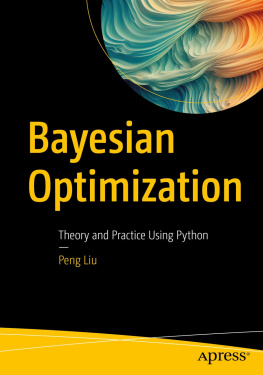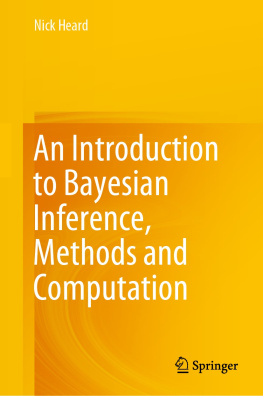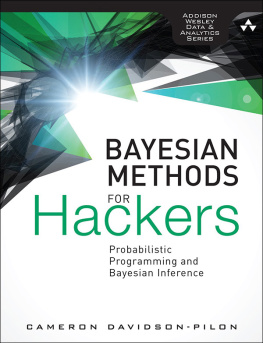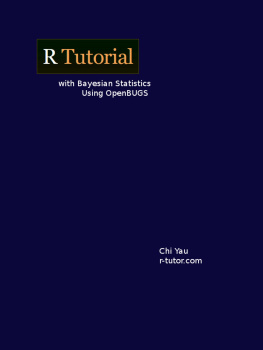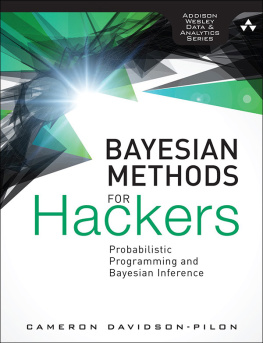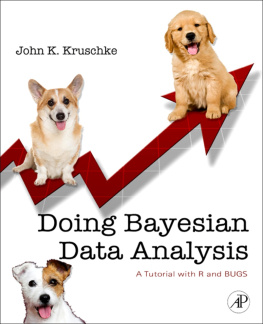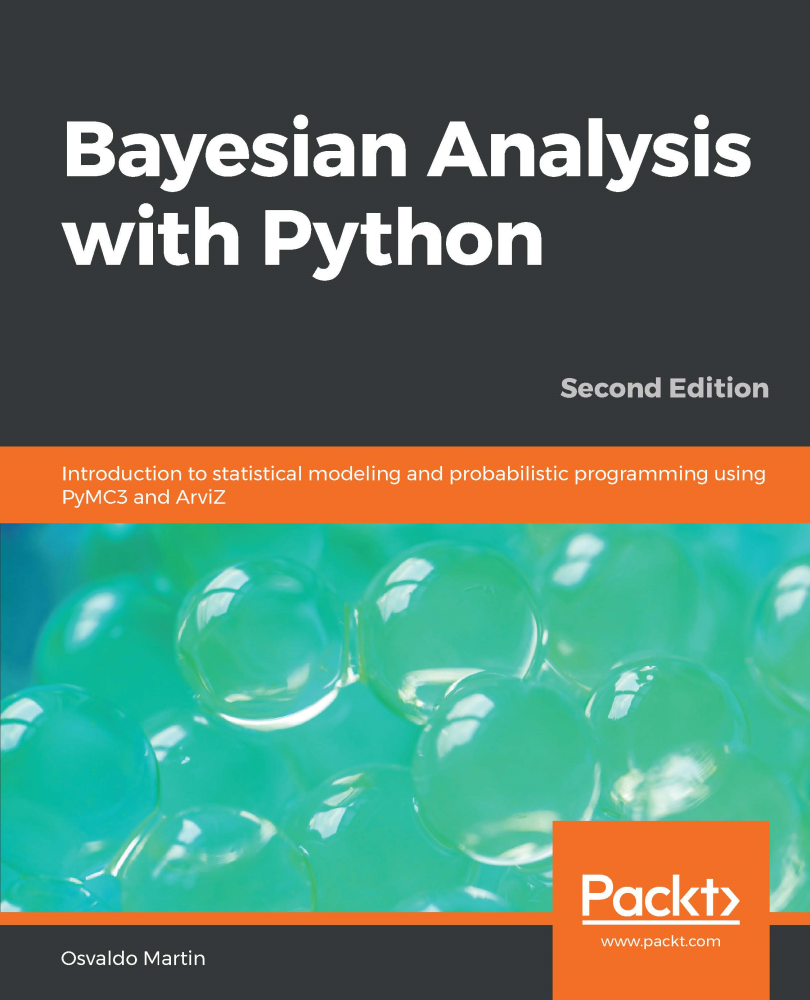Osvaldo Martin - Bayesian Analysis with Python
Here you can read online Osvaldo Martin - Bayesian Analysis with Python full text of the book (entire story) in english for free. Download pdf and epub, get meaning, cover and reviews about this ebook. year: 2016, publisher: Packt Publishing, genre: Science. Description of the work, (preface) as well as reviews are available. Best literature library LitArk.com created for fans of good reading and offers a wide selection of genres:
Romance novel
Science fiction
Adventure
Detective
Science
History
Home and family
Prose
Art
Politics
Computer
Non-fiction
Religion
Business
Children
Humor
Choose a favorite category and find really read worthwhile books. Enjoy immersion in the world of imagination, feel the emotions of the characters or learn something new for yourself, make an fascinating discovery.

- Book:Bayesian Analysis with Python
- Author:
- Publisher:Packt Publishing
- Genre:
- Year:2016
- Rating:4 / 5
- Favourites:Add to favourites
- Your mark:
Bayesian Analysis with Python: summary, description and annotation
We offer to read an annotation, description, summary or preface (depends on what the author of the book "Bayesian Analysis with Python" wrote himself). If you haven't found the necessary information about the book — write in the comments, we will try to find it.
Bayesian modeling with PyMC3 and exploratory analysis of Bayesian models with ArviZ
Key Features- A step-by-step guide to conduct Bayesian data analyses using PyMC3 and ArviZ
- A modern, practical and computational approach to Bayesian statistical modeling
- A tutorial for Bayesian analysis and best practices with the help of sample problems and practice exercises.
The second edition of Bayesian Analysis with Python is an introduction to the main concepts of applied Bayesian inference and its practical implementation in Python using PyMC3, a state-of-the-art probabilistic programming library, and ArviZ, a new library for exploratory analysis of Bayesian models.
The main concepts of Bayesian statistics are covered using a practical and computational approach. Synthetic and real data sets are used to introduce several types of models, such as generalized linear models for regression and classification, mixture models, hierarchical models, and Gaussian processes, among others.
By the end of the book, you will have a working knowledge of probabilistic modeling and you will be able to design and implement Bayesian models for your own data science problems. After reading the book you will be better prepared to delve into more advanced material or specialized statistical modeling if you need to.
What you will learn- Build probabilistic models using the Python library PyMC3
- Analyze probabilistic models with the help of ArviZ
- Acquire the skills required to sanity check models and modify them if necessary
- Understand the advantages and caveats of hierarchical models
- Find out how different models can be used to answer different data analysis questions
- Compare models and choose between alternative ones
- Discover how different models are unified from a probabilistic perspective
- Think probabilistically and benefit from the flexibility of the Bayesian framework
If you are a student, data scientist, researcher, or a developer looking to get started with Bayesian data analysis and probabilistic programming, this book is for you. The book is introductory so no previous statistical knowledge is required, although some experience in using Python and NumPy is expected.
Downloading the example code for this book You can download the example code files for all Packt books you have purchased from your account at http://www.PacktPub.com. If you purchased this book elsewhere, you can visit http://www.PacktPub.com/support and register to have the files e-mailed directly to you.
Osvaldo Martin: author's other books
Who wrote Bayesian Analysis with Python? Find out the surname, the name of the author of the book and a list of all author's works by series.

